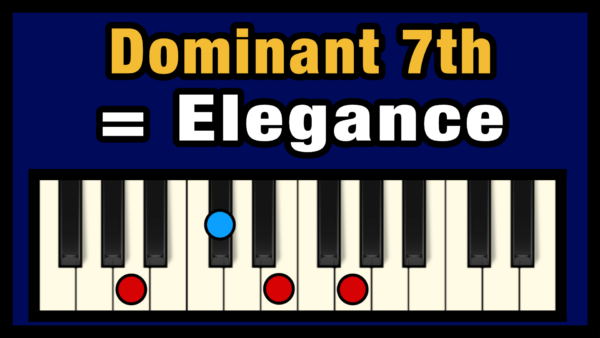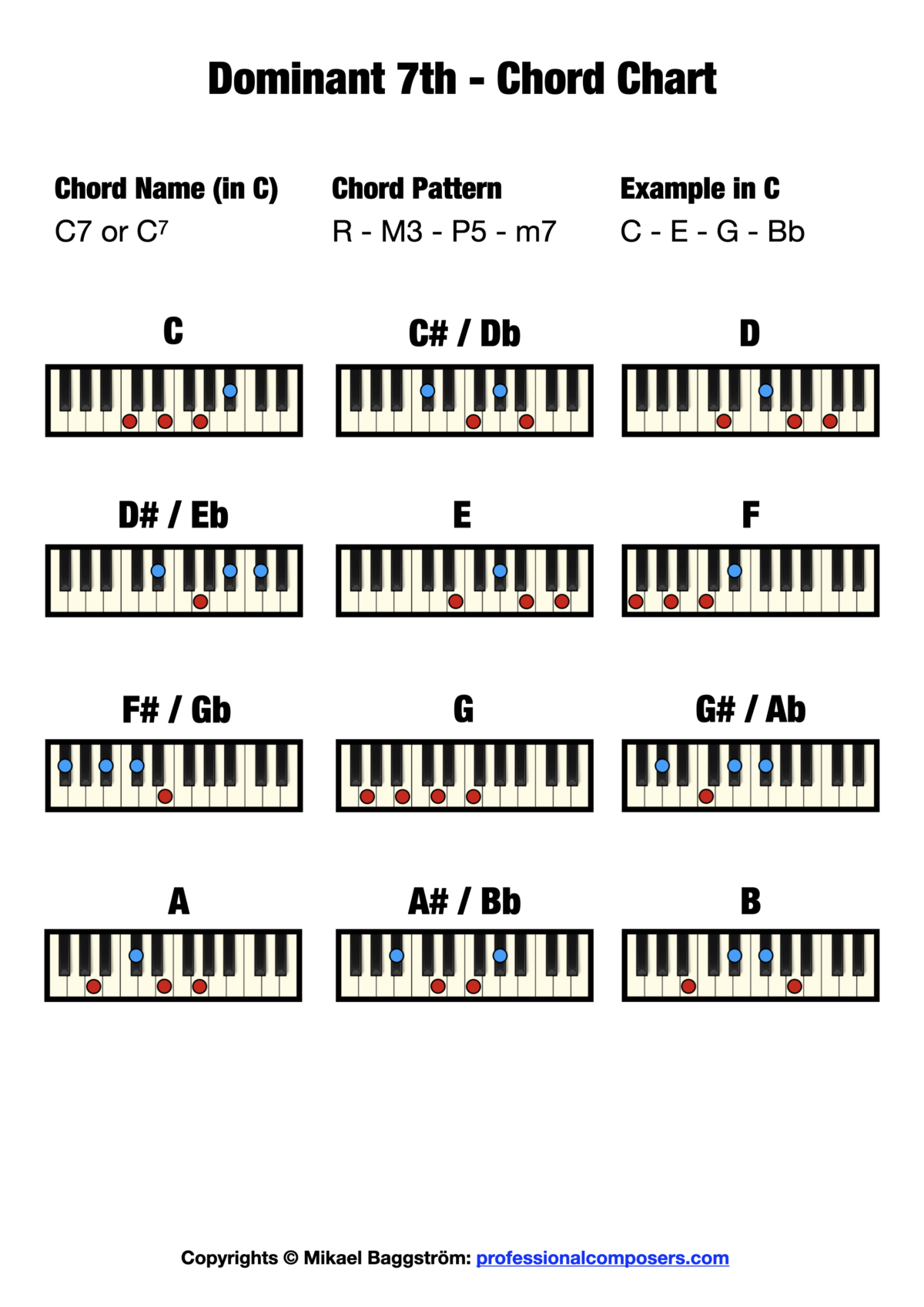 Why does the dominant 7th chord sound so elegant and classy?
Why does the dominant 7th chord sound so elegant and classy?
It’s used in popular music to add some variation and rich harmony beyond the standard boring triads. It’s also used a lot in jazz music, because it’s neither major sound nor minor sounding. It’s both!
The reason for this is that it is built from a major triad, but adds a minor 3rd on top. Which creates a minor 7th from the root. This extra interval adds that minor emotional tone to the otherwise uplifting sound of the major triad.
This very ambiguity is what makes the dominant 7th chord so classy, and very useful too.
How to Play a Dominant 7th Chord?
Let’s use the standard root position of the chord to make it easy. Here’s the chord formula for a dominant 7th chord.
- Root Note of the Chord
- Major 3rd from the Root
- Perfect 5th from the Root
- minor 7th from the Root
You can show this chord formula by simply using the standard abbreviations for intervals in music:
- R – M3 – P5 – m7
How to notate a Dominant 7th Chord?
In most cases you simply add a 7 after the chord root name. For example: if you want to play a G Dominant 7th chord, you simply notate it as G7. To make things more clear when reading chords the “7” is often written as a superscript (meaning a small character to the upper right of the name) like this G7.
Dominant 7th – Piano Chord Chart
Here’s a complete chord chart on piano for all dominant 7th chords. Download it for free, print it out, or simply bookmark this web page for reference.


